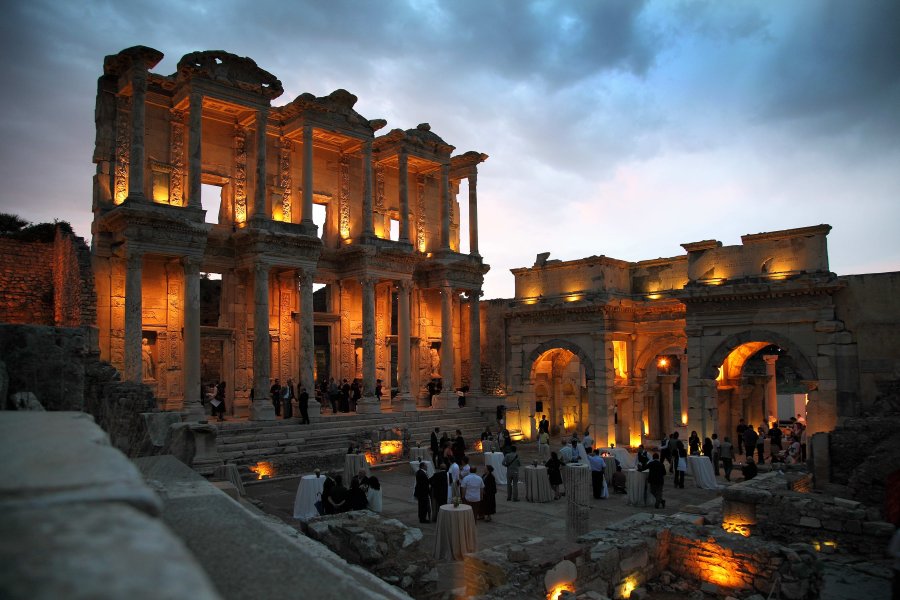Library Of Celsus: Beautiful Classic Monument In Ephesus That Stored 12,000 Scrolls
A. Sutherland - AncientPages.com - The library of Celsus is one of the best known and the most beautiful classic monuments in Turkey.
It was built in 117 AD to serve as a monumental mausoleum for Gaius Julius Celsus Polemaeanus, the governor of the province of Asia from his son Galius Julius Aquila. Celsus was born in Sardeis, once the capital of the ancient kingdom of Lydia.
"...the narrow crypt under the apse contains even today the sarcophagus with the earthly remains of the donator (Fig. 5). The sarcophagus, chiselled out of a marble block, is 2.68 m long, 1.10 m wide and 1.75 m high, and decorated with garlands carried by Eros's and Nikes..."(V. M Strocka) Image credit: V. M Strocka
His father was a Roman knight and Celsus read the law and began his military career 68 AD as military tribune in Alexandria, in the legion that was to proclaim its commander Titus Flavius Vespasianus, emperor.
Celsus is buried in a crypt beneath the library in a richly decorated marble sarcophagus. The structure's marble facade located on a nine-stepped podium rises to 17 m in height. The library's marble gate located on the north side, was reconstructed by the donators Mazaios and Mithridates from the time of Caesar Augustus (4 or 3 BC and was dedicated to the emperor Augustus, served as the monumental entrance to Ephesus' Commercial Agora.
The Library of Celsus, which stored 12,000 scrolls, was the third-largest library in the ancient world behind both Alexandria and Pergamum.
Facade of the Library of Celsus at night. Image credit: Austrian Archaeological Institute via wikipedia
In the donation inscription of the Celsus library, which was chiseled on the facade of the lower
floor over the farthest southern niche, there is written (as cited by Volker M. Strocka, a German classical archaeologist who since 1967 he regularly took part in the Austrian research in Ephesus and was responsible for the reconstruction of the Celsus Library):
"To Tiberius lulius Celsus Ptolemaeanus, consul and proconsul of Asia. Tiberius lulius Aquila
Ptolemaeanus, consul, his son, built the Celsian library out of his own funds, with all the building
decorations, the statues and books.
"He also left 25.000 dinars for its equipment and for the acquisition of books, 2000 dinars of which were spent in one year, so that from the annual interest of the remaining 23.000 the library will be kept and its attendants will be paid 18001 dinars, which shall be paid to them on the birthday of Celsus for all times. And also according to the will of Aquila new books shall be bought every year. And also his [Celsus's] statues shall be hung with wreaths thrice a year. And also all other statues shall be decorated every year on the [birthday] feast of Celsus.
The Library of Celsus, Ephesus Turkey. Image credit: Low Cost Europe Travel
"After the same heirs had commissioned the equipment of the library with the 2000 dinars taken (from the capital], the library was officially Opened on the feast of Celsus (?), so that... on the seventeenth on the month... according to the wording of the will, no [demand nor] deduction nor expenditure shall be put up to them from the stated funds, for the heirs of Aquila have wholly completed the work. Executor of the will was Tiberius Claudius Aristion, three times asiarch...."
The library's nine steps leading to the entrance of the library consisted of three large doors. Large windows had been constructed above the doors and the second floor in order to let light enter the library. The scrolls of the manuscripts were kept in cupboards in niches on the walls. There were double walls behind the bookcases to prevent them from the extremes of temperature and humidity.
The building has niches decorated with statues, which today are copies of the originals. The figures symbolize wisdom (Sophia), knowledge (Episteme), intelligence (Ennoia) and valor (Arete). These are the virtues of Celsus.
The library was either destroyed by the earthquake of 262 AD, or the Goths plundered the city of Ephesus and shortly afterward had set fire to the library. Fortunately, a great part of its façade was not damaged seriously, so it has survived nowadays in a pretty good condition.
The library was restored with the aid of the Austrian Archaeological Institute and the originals of the statues were taken to Ephesus Museum in Vienna in 1910. However, about a hundred years ago, nothing was yet known of the library and its ruins were covered with the debris of the ruined city of Ephesus that was abandoned in the early middle ages. In 1903, the remains of the library's facade that had collapsed during an earthquake were identified by an archaeological expedition from Austria.
There was also an auditorium that was used for lectures or presentations between the library and the Marble Road. It was built during the reign of the Emperor Hadrian.
Written by – A. Sutherland - AncientPages.com Senior Staff Writer
Copyright © AncientPages.com All rights reserved. This material may not be published, broadcast, rewritten or redistributed in whole or part without the express written permission of AncientPages.com
More From Ancient Pages
-
 Inca Communication: Mailmen Of The Inca Empire Were Fast Roadrunners
Ancient History Facts | Mar 20, 2016
Inca Communication: Mailmen Of The Inca Empire Were Fast Roadrunners
Ancient History Facts | Mar 20, 2016 -
 Evidence Supporting Drumelzier Legend And Merlin’s Death In Scotland Uncovered By Archaeologists
Archaeology | Sep 4, 2024
Evidence Supporting Drumelzier Legend And Merlin’s Death In Scotland Uncovered By Archaeologists
Archaeology | Sep 4, 2024 -
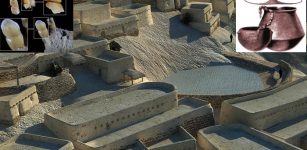 4,000 Years Ago Women Of El Argar Used Their Teeth As Tools
Archaeology | Nov 10, 2020
4,000 Years Ago Women Of El Argar Used Their Teeth As Tools
Archaeology | Nov 10, 2020 -
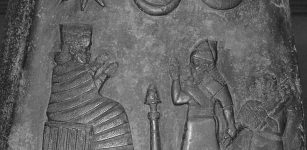 Kudurru Of Melishihu – Stone Records From The Kassite Dynasty In Babylonia
Artifacts | Jan 17, 2016
Kudurru Of Melishihu – Stone Records From The Kassite Dynasty In Babylonia
Artifacts | Jan 17, 2016 -
 El Cid ’The Lord’ – Medieval Castilian Leader Known For His Courage And Extraordinary Military Skills
Featured Stories | Sep 20, 2021
El Cid ’The Lord’ – Medieval Castilian Leader Known For His Courage And Extraordinary Military Skills
Featured Stories | Sep 20, 2021 -
 Silver Needle Dismissed As Trash Was Part Of A Stunning Viking Treasure Found By Farmer On Gotland
Archaeology | Nov 17, 2020
Silver Needle Dismissed As Trash Was Part Of A Stunning Viking Treasure Found By Farmer On Gotland
Archaeology | Nov 17, 2020 -
 Isaac Newton Believed Egyptian Pyramids Held Key To The Apocalypse – Unpublished Manuscripts Reveal
News | Dec 10, 2020
Isaac Newton Believed Egyptian Pyramids Held Key To The Apocalypse – Unpublished Manuscripts Reveal
News | Dec 10, 2020 -
 Hidden Rare Map Reveals How American “Hero” William Clark Broke Peacy Treaty And Robbed Indigenous Americans Of Land
Archaeology | Feb 7, 2022
Hidden Rare Map Reveals How American “Hero” William Clark Broke Peacy Treaty And Robbed Indigenous Americans Of Land
Archaeology | Feb 7, 2022 -
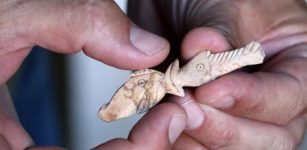 2500-Year-Old Objects Made From Goat Bones Discovered In Turkey’s City Of Aigai
Archaeology | Sep 17, 2020
2500-Year-Old Objects Made From Goat Bones Discovered In Turkey’s City Of Aigai
Archaeology | Sep 17, 2020 -
 Humans May Be The Result Of An Evolution ‘Accident’- Scientists Say
Evolution | Sep 8, 2023
Humans May Be The Result Of An Evolution ‘Accident’- Scientists Say
Evolution | Sep 8, 2023 -
 Cretaceous Fossil From Antarctica Reveals Earliest Modern Bird
Fossils | Mar 6, 2025
Cretaceous Fossil From Antarctica Reveals Earliest Modern Bird
Fossils | Mar 6, 2025 -
 Magnificent Chamber Graves Of Four Scandinavian Warriors Discovered In Poland – The Piast Dynasty In New Light
Archaeology | Jan 22, 2020
Magnificent Chamber Graves Of Four Scandinavian Warriors Discovered In Poland – The Piast Dynasty In New Light
Archaeology | Jan 22, 2020 -
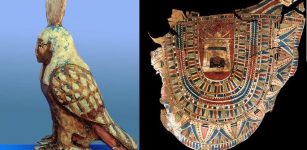 Graeco-Roman Era Rock-Cut Tomb Unearthed In Aswan West Bank, Upper Egypt
Archaeology | Apr 24, 2019
Graeco-Roman Era Rock-Cut Tomb Unearthed In Aswan West Bank, Upper Egypt
Archaeology | Apr 24, 2019 -
 SPQR Was A Symbol Of The Roman Republic
Ancient History Facts | Dec 4, 2017
SPQR Was A Symbol Of The Roman Republic
Ancient History Facts | Dec 4, 2017 -
 On This Day In History: The Battle Of Benevento Was Fought – On February 26, 1266
News | Feb 26, 2017
On This Day In History: The Battle Of Benevento Was Fought – On February 26, 1266
News | Feb 26, 2017 -
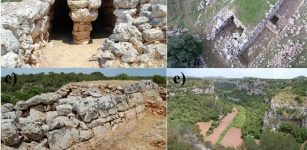 Eating And Social Habits Of People In The Balearic Islands 3,000 Years Ago – Reconstructed
Archaeology | Jan 18, 2023
Eating And Social Habits Of People In The Balearic Islands 3,000 Years Ago – Reconstructed
Archaeology | Jan 18, 2023 -
 Prehistoric Dispilio: Accurately Dating Ancient Site To 5259 BC Using Cosmic Rays
Archaeology | May 21, 2024
Prehistoric Dispilio: Accurately Dating Ancient Site To 5259 BC Using Cosmic Rays
Archaeology | May 21, 2024 -
 On This Day In History: Krakatoa – Most Dangerous Volcano Erupted- On August 26, 1883
News | Aug 26, 2016
On This Day In History: Krakatoa – Most Dangerous Volcano Erupted- On August 26, 1883
News | Aug 26, 2016 -
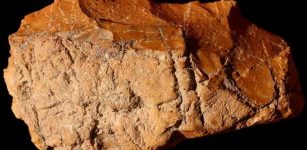 Traces Of Early Humans Discovered In Southern Iran
Archaeology | Sep 25, 2019
Traces Of Early Humans Discovered In Southern Iran
Archaeology | Sep 25, 2019 -
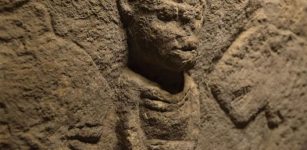 World’s Oldest Narrative Art Depicts An ‘Unusual And Unique’ Scene – 11,000-Year-Old Carving Investigated
Archaeology | Dec 8, 2022
World’s Oldest Narrative Art Depicts An ‘Unusual And Unique’ Scene – 11,000-Year-Old Carving Investigated
Archaeology | Dec 8, 2022


